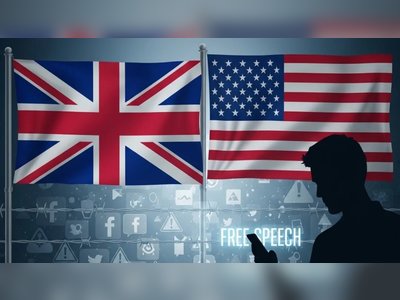“Amazon’s Choice” Does Not Necessarily Mean A Product Is Good
When you’re looking at a search result with hundreds of options on Amazon, the “Amazon’s Choice” label may give you a sense of relief. The label’s name and prominent placement seem to imply that listings with the “Amazon’s Choice” designation -even more authoritative than a simple “Best-Selling” badge -are a curated selection of products reviewed and tested by the company, and highlighted for shoppers looking for similar products. But “Amazon’s Choice” isn’t that at all, and here’s the disappointing news: It’s a label automatically awarded to listings by an algorithm based on customer reviews, price, and whether the product is in stock. And those choices Amazon’s software makes aren’t always reliable -in fact, sometimes they’re Amazon-recommended crap.
Amazon declined to answer BuzzFeed News’ questions about how exactly Amazon’s Choice listings are selected and why its selections are sometimes flawed. A spokesperson for the company wrote in a statement, “We launched Amazon’s Choice in 2015 as a way to simplify shopping for customers by highlighting highly rated, well-priced products ready to ship immediately for the most popular searches on Amazon.” But what consumers are finding is that while a product that performs well on key marketplace metrics might get an “Amazon’s Choice” label, it isn’t necessarily a good product. There are many examples.
A forehead-and-ear thermometer with a 3.6-star average rating over 1,509 reviews is distinguished as Amazon’s Choice for an “infant thermometer.” Yet the product description from the manufacturer itself said, “Widely inaccurate and the results could be found from the comments by yourself.” (After BuzzFeed News reached out to the company for comment, that description was removed from the Amazon listing.)
One of the phrases Amazon highlights from the infant thermometer reviews is “waste your money.” Customers cite inaccurate and “terribly erratic” readings. One reviewer said the thermometer is advertised on Amazon as “good for adding to your baby registry,” despite the product’s instructions to “not use on newborns.”
YouTuber LockPickingLawyer found that several Amazon’s Choice “high security padlocks” could be picked in two seconds, and another that didn’t require any picking at all. LockPickingLawyer also discovered that the AmazonBasics Security Safe (Amazon’s Choice for “safe”) could be opened in three seconds with a tool bought, ironically, on Amazon. The products, he told BuzzFeed News, were all “deeply flawed.”
“I think part of the problem could be that the ‘Choice’ is based in part on consumer satisfaction as reflected in reviews. Unfortunately, consumers of security products are often completely unaware of serious design flaws that would be obvious to an expert,” said the YouTuber, who asked not to be named.
This flask seems well-reviewed, at 4.1 stars and 616 customer reviews. Yet one customer who put whiskey in the flask found that the liquor had turned black a few days later, laden with “black sediment as if it leached into the liquid via chemical reaction,” they wrote. Another also reported the flask turning alcohol black, with an awful metallic smell. One customer, who said in December 2018 that they bought the flask specifically “because it was listed as Amazon’s Choice,” noticed a “strange taste” before also seeing that it had turned black. “Amazon should be ashamed for listing it as Amazon’s Choice,” the customer wrote.
Chris Barton, a manager at CKB Products Wholesale, which sells the flask on Amazon, said oxidation causes the alcohol’s discoloration and can occur if customers don’t follow the included instructions. He added that some flasks may come from an unauthorized dealer. “When Amazon sends us back customer returns, many flasks are not ours,” Barton told BuzzFeed News. Listings can feature multiple sellers for the same product, and Amazon’s system chooses one based on a variety of factors when a customer clicks “Add to Cart,” unbeknownst to most shoppers.
Last fall, Nova Scotia–based Amazon customer R.D., who asked to be identified by her initials, was searching for a vacuum to suck up pet hair. One product, marked “Amazon’s Choice,” caught her eye, but when she received her order, the vacuum barely sucked up anything. “I took the “Amazon’s Choice” label as an endorsement by Amazon, although I later found out that’s more of an algorithmic term. I find that to be confusing at best, misleading at worst,” she told BuzzFeed News.
When you hover over the “Amazon’s Choice” badge, a pop-up states that these are “highly rated, well-priced products available to ship immediately” -although not necessarily reliable, high-quality products, and that’s the important thing shoppers are likely to miss.
Amazon’s Choice “carries with it a signal that the product has been singled out as better in price and quality than other similar products. This may or may not be true as there is not much transparency on how items get the ‘Amazon Choice’ label,” said Jack Gillis, executive director of Consumer Federation of America, an association of consumer advocacy groups. “What the consumer doesn’t know is if it is the best price for the item and if there are any [important] negative reviews or problems with the product.”
“Amazon’s Choice is just our recommendation, and customers can always ask for specific brands or products if they choose,” an Amazon spokesperson told BuzzFeed News. The spokesperson also said that human and automated techniques are used to ensure the quality of recommendations, and if the company determines that a recommendation should not be made, the Amazon’s Choice label is removed.
Underlying the problems with Amazon’s Choice are the shortcomings that plague the rest of Amazon: Reviews, one of the main factors on which the company says Amazon’s Choice is based, can be easily manipulated by third-party sellers trying to stand out in Amazon’s massive, highly competitive marketplace.
This listing was Amazon’s Choice for the search term “breathalyzer” as of June 10. The $23 “Professional Breathalyzer” had a 4.4-star rating out of 174 reviews, yet reviews on the listings cited completely different products: a glucometer, an aromatherapy set, and an alcohol-free cleaner, among other things. The listing employed a common kind of ratings deception called review reuse fraud, in which sellers take an existing product page, then update the photo and description to show an entirely different product. The goal: to retain all of the existing reviews so the product looks more legitimate to shoppers.
A day later, after a tweet called attention to the inauthentic reviews, the Amazon’s Choice label was removed. Amazon did not respond to BuzzFeed News’ request for comment on the item.
There’s also this Amazon’s Choice dog bark collar (4.4-star average, 827 reviews), which includes dozens of reviews about RuPaul’s Drag Race. Then there’s this Amazon’s Choice MacBook Pro charger with multiple reviews about flavored pistachios, a lumbar support aid, and a sewing machine table.
Amazon has said that it is “investing heavily” in ways to detect and prevent inauthentic reviews, as well as removing selling privileges from sellers that list different products on the same listing, which is against Amazon’s rules. Still, the review manipulation persists -and not only is Amazon unable to crack down on bad actors, but in some cases it’s also using a special badge to actively encourage customers to buy products whose sellers have recycled or purchased reviews. And although review recycling and inauthentic reviews don’t mean that a product is bad, they do make it harder for shoppers to distinguish legitimately good products from crappy ones.
Recommending products based on their star score comes with other complications, too. Reviews left on other products show that when customers are dissatisfied with products, sellers sometimes offer a replacement so that the customers will consider revising their review and raise their star rating, which distorts the ranking for faulty products.
Amazon customer R.D. left a one-star review of the faulty pet hair vacuum, but after she received a refund, the review was taken down without her consent. She contacted Amazon to report it, then attempted to republish the negative review. Amazon did not follow up, and her second review was never approved. “The vacuum still has great reviews and is listed as Amazon’s Choice. This whole incident deeply perturbed me,” she said.
The Amazon spokesperson declined to detail what happens when a listing marked “Amazon’s Choice” is found to have review manipulation specifically.
“This really does show that there could be a pattern of deceptive advertising at Amazon that the public needs to be aware of and be skeptical about. Amazon has tried to steer people, using its market power, into certain products in the past,” said Jamie Court, president of the Consumer Watchdog advocacy group.
Court pointed to a 2017 study in which Consumer Watchdog found that Amazon inflated list prices to make the site’s savings appear larger than they really were. The Federal Trade Commission began looking into the allegations over misleading reference prices in July 2017.
A spokesperson for the FTC, which regulates advertising, said that the agency doesn’t comment on business practices by specific companies. Regarding review recycling as a practice, however, FTC Public Affairs Officer Frank Dorman told BuzzFeed News in May 2018 that, “without commenting on any specific example, what we can say is that it’s deceptive to misrepresent that reviews for one product apply to a different product.” Dorman noted that fraud and deception are treated equally under the FTC Act.
No recommendation system is perfect, and when it works as intended, “Amazon’s Choice” does spare shoppers from having to sift through countless options in Amazon’s massive marketplace. The Amazon spokesperson said, “It’s been a really popular feature both on Amazon and on Alexa because it allows customers to make fast and easy decisions on what to buy.”
But the badge can be misleading, and it’s harder to hold an algorithm accountable for bad recommendations than a team of reviewers. “With everything I know about how sales rank can be abused and how many positive reviews that are fake can remain on the site, it’s tough for me to trust the [Amazon’s Choice] badge,” said Chris McCabe, who is a former Amazon marketplace investigator and now runs a seller consulting firm, eCommerceChris.
Perhaps it’s why, for some categories, Amazon has started including “Editorial Recommendations,” based on actual testing by sites like Wirecutter, OutdoorGearLab, and Reviewed, to compensate for “Amazon’s Choice” screwups.
While customers are nudged to buy shoddy products, highlighted by an algorithm that can’t detect nuances in review manipulation or customer sentiment in those reviews, Amazon still profits. McCabe said the Amazon’s Choice label encourages customers to buy, thus helping both marketplace sellers and Amazon (which earns a portion of each sale). “For sellers, Amazon’s Choice means they’re going to win the ‘buy’ box more. It ups their visibility. For customers, they’re going to buy more. It’s a trusted-brand seal of approval from Amazon itself,” McCabe said.
So when you’re shopping on Amazon and see something marked “Amazon’s Choice,” don’t immediately click to buy. First look at the reviews and see if there’s review recycling or anything suspicious about the quality of reviews. You can also copy the listing’s link and run it through a fake-review-detection system like ReviewMeta or Fakespot. Then do a quick Google search to see if the company selling the product has a legitimate website or if the item has been reviewed by a publication or site dedicated to consumer products, like Good Housekeeping, Consumer Reports, or Wirecutter. I know, it’s a lot of work. Whatever you do, don’t take “Amazon’s Choice” at face value.












